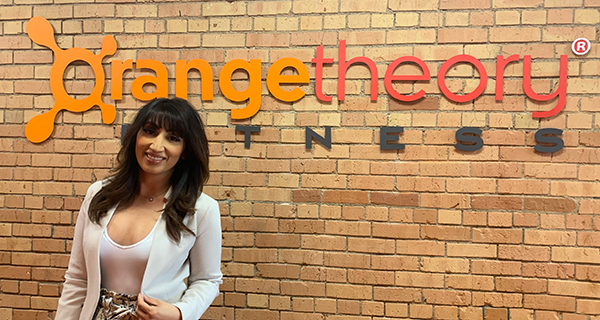Hifa Maleki is vice-president of franchise development and operations at OTF (Orangetheory Fitness) Canada Inc.

Hifa Maleki
What is Orangetheory Fitness and what makes it different from other fitness centres in Canada?
Maleki: Orangetheory Fitness is a group workout broken into intervals of cardiovascular and strength training. Backed by the science of excess post-exercise oxygen consumption or EPOC, Orangetheory’s heart-rate-monitored workouts are designed to get participants within the target-training zone of 84 per cent to 91 per cent of their max heart rate, or as we call it, The Orange Zone.
Led by highly-skilled coaches, each Orangetheory Fitness workout incorporates endurance, strength and power elements through a variety of equipment, including treadmills, rowing machines, TRX suspension training and free weights.
What separates us from other Canadian fitness centres is our in-studio technology. Since opening our first location in 2012, Orangetheory has evolved into an industry-leading fitness and technology company. In addition to displaying real time performance data on TV screens during the workout, our in-studio technology aggregates the data of nearly one million global members to get a better understanding of how users respond physiologically to our workouts. We use this data to ensure we are constantly improving and enhancing the member experience.
How many locations do you have in Canada and what are your expansion plans?
Maleki: We are pleased to have finished 2018 with 85 open studios in Canada and are on track to have over 110 locations by the end of 2019. This will include a new studio in Britannia, Calgary, and our very first New Brunswick location, putting Orangetheory in nine out of 10 provinces.
When you expand in a market what are the things you look for?
Maleki: There are three critical components when we are considering further developing into a city or infilling an existing market. Population density plays a major role as we need to ensure the market has a strong number of our potential member demographics living in the market. Population numbers as a whole are not always a strong indicator of what the benchmark number of studios a market can support will be. We use our core demographic and drive time reporting to ensure we have a healthy number of people who are likely to join in a designated area to support its success.
The market needs to have great real estate options available in areas inside the territory that will not cannibalize the existing location(s). Additionally, the locations need to fit an Orangetheory studio physically into the space, need to make economic sense for any licensee and most importantly, the locations must cater to the neighbourhoods and areas where we’re targeting members to support long-term revenue growth.
The most critical component though, is having the right franchise partners in the market. Being in the right market and finding the right real estate doesn’t mean that a market that is already successful will continue being successful. Ensuring you have awarded an area to the right franchisee(s) will ensure sustainable and successful growth.
What is the demographic of your customers?
Maleki: The core of our brand is to make it accessible to all ages and fitness levels with completely scalable workouts, but the largest percentage of our customers are 25-to-49-year-old females. We’re continuing to see increased interest from other consumer sectors, but in the context of opening a new location, we want to make sure we’re lined up with our biggest customer group. This explains why you will see Orangetheory predominantly located in suburban areas in addition to high-density urban areas.
What trends are you seeing in the fitness industry? Are people still joining clubs?
Maleki: Yes, absolutely people are still joining clubs. One key trend we’re seeing in the industry is a move towards a more bespoke workout experience that’s tailored to a variety of lifestyles.
While there are of course people who enjoy working out alone, at home and on their own schedule, as we’ve seen with the invention of Peloton and the ever-popular Beach Body brands, a good portion of people rely on going to the gym and working out with a coach, joining a class or working out with a friend for motivation and guidance.
It’s also often more cost effective as many can’t afford to purchase a variety of pricey gym equipment to outfit a home studio.
Also, people are busy! So, understandably, they’re looking for an efficient but effective workout experience. Large clubs can be overwhelming and it can be hard to know where to start. This is why we focus on making it simple by taking the guesswork out of exercise.
When creating a completely different workout every day, our skilled fitness team and our highly trained coaches ensure members are getting the most out of their valuable time.
– Mario Toneguzzi
The views, opinions and positions expressed by columnists and contributors are the author’s alone. They do not inherently or expressly reflect the views, opinions and/or positions of our publication.


